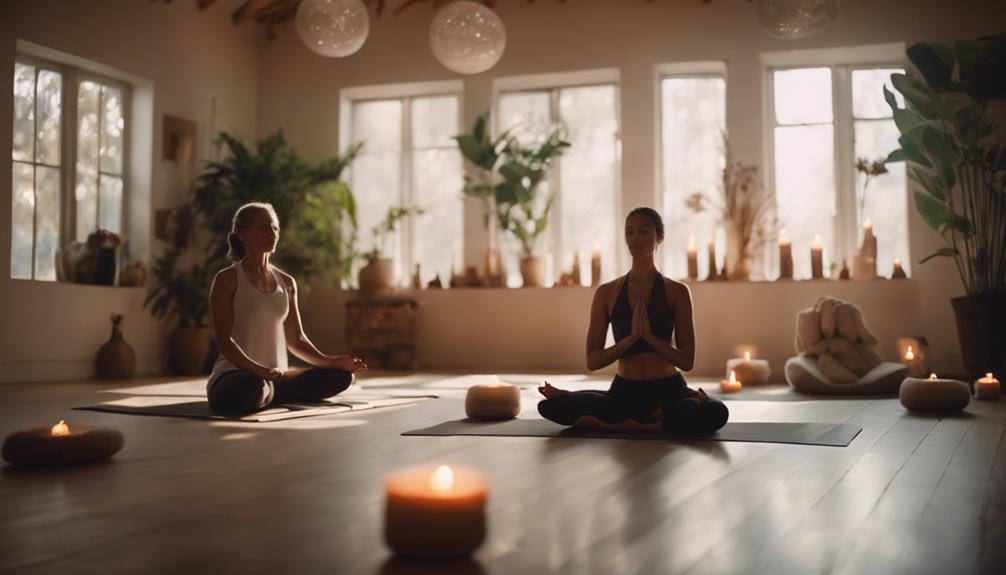Restorative Yoga

Restorative yoga is a gentle yet powerful practice that focuses on relaxation and restoration of the body and mind. In today’s fast-paced world, many individuals are seeking ways to reconnect with themselves and alleviate stress. This guide will explore the principles of restorative yoga, its benefits, various poses, and how to incorporate it into your daily routine.
What is Restorative Yoga?
Restorative yoga is a form of yoga designed to relax the body deeply and restore its natural state of balance. Unlike traditional yoga styles that may emphasize strength and stamina, restorative yoga prioritizes relaxation and gentle stretching. It often involves the use of props, such as blankets, bolsters, and blocks, to support the body in various poses. This practice allows for longer holds in postures, enabling practitioners to release tension and promote a sense of peace and well-being.
The Benefits of Practicing Restorative Yoga
Engaging in restorative yoga offers a multitude of benefits for both physical and mental health. Physically, it aids in muscle recovery, improves flexibility, and reduces chronic pain. Mentally, restorative yoga enhances mindfulness and promotes emotional healing by lowering stress levels and anxiety. Studies have shown that regular practice can lead to improved sleep quality, better concentration, and increased feelings of happiness. For those dealing with high-stress lifestyles or recovering from illness, the calming nature of restorative yoga can be especially beneficial.
Essential Props for Your Restorative Yoga Practice
To make the most out of your restorative yoga sessions, having the right props is essential. Common props include yoga bolsters, blankets, blocks, and straps. Bolsters, which are firm yet cushy cushions, provide support in various poses and help you relax more deeply. Blankets can be used for additional cushioning or warmth, while blocks assist in achieving proper alignment. Straps are helpful for extending reach and maintaining stability in poses. Investing in these tools can enhance your restorative yoga experience and make it more enjoyable.
Common Restorative Yoga Poses
While restorative yoga includes a variety of poses, some of the most commonly practiced include Child’s Pose (Balasana), Legs-Up-The-Wall Pose (Viparita Karani), and Supported Bridge Pose (Setu Bandhasana). Child’s Pose is excellent for calming the mind and stretching the back, while Legs-Up-The-Wall Pose promotes relaxation and improves circulation. Supported Bridge Pose opens the chest and helps alleviate tension in the lower back. Each pose can be held for an extended period, allowing your body to sink into relaxation and release any lingering stress.
Creating a Calm Environment for Your Practice
The environment in which you practice restorative yoga can significantly influence your experience. It is essential to create a calm and inviting space that promotes relaxation. Choose a quiet area free from distractions and clutter. Dim the lights, or use candles to create a soothing ambiance. You may also consider playing soft, calming music or nature sounds to enhance your practice. Additionally, incorporating essential oils, such as lavender or chamomile, can elevate your sensory experience and help you unwind more fully.
Incorporating Restorative Yoga into Your Daily Routine
Integrating restorative yoga into your daily routine can be simple and rewarding. Start by setting aside time each week dedicated to your practice, even if it’s just 15-30 minutes. You can begin with a short sequence of restorative poses, focusing on your breath and allowing your body to relax fully. If time allows, consider attending a restorative yoga class to experience guided instruction. Over time, you may find that even a few minutes of restorative yoga at the end of your day can significantly improve your overall well-being.
Restorative Yoga for Stress Relief
In an age where stress has become a part of everyday life, restorative yoga serves as an effective tool for stress relief. The slow, intentional movements and focus on breath work encourage relaxation and reduce the body’s stress response. By activating the parasympathetic nervous system, restorative yoga can help lower cortisol levels and promote a sense of calm. Practicing restorative yoga regularly can equip you with the tools needed to manage stress more effectively and cultivate a greater sense of inner peace.
Conclusion: Embrace the Power of Restorative Yoga
Restorative yoga is more than just a physical practice; it’s an invitation to slow down, reconnect, and nurture yourself. With its numerous benefits for both body and mind, it provides a sanctuary amidst the chaos of daily life. By incorporating restorative yoga into your routine, you can foster a deeper sense of relaxation, improve your overall health, and create a more balanced lifestyle. Embrace the power of restorative yoga, and allow it to transform your approach to wellness and self-care.
Whether you are a seasoned yogi or a beginner, restorative yoga offers something for everyone. So roll out your mat, gather your props, and take the first step towards a more restorative and fulfilling practice today!